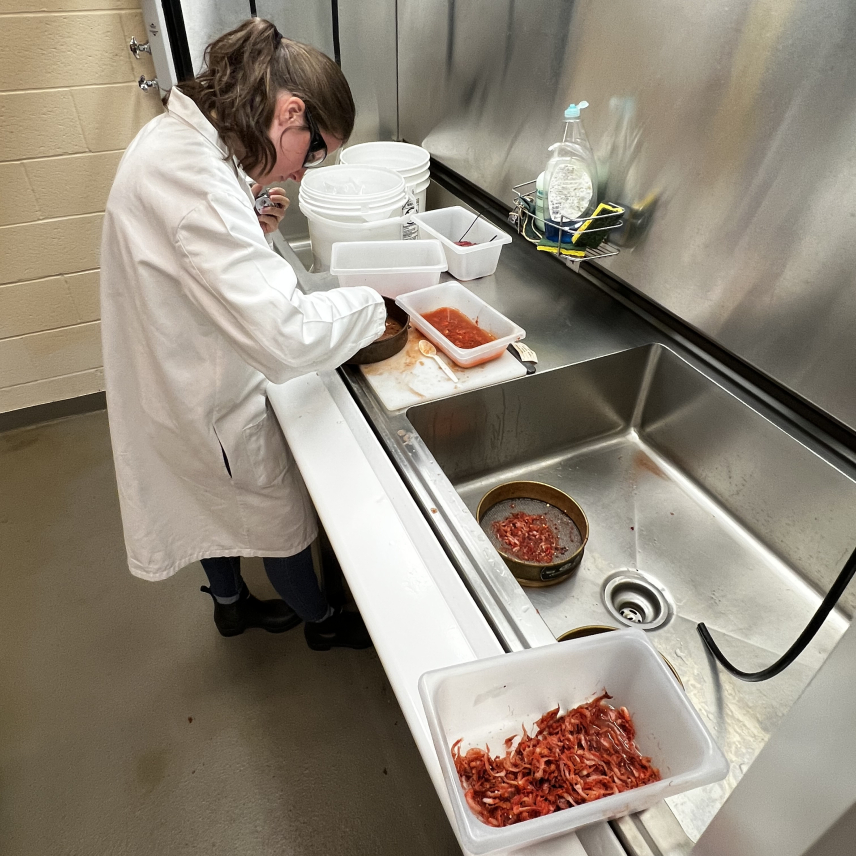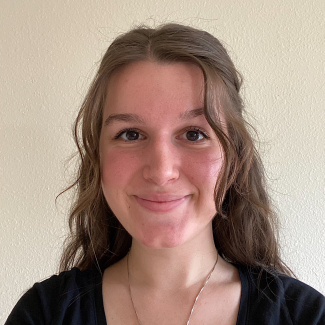Hi everyone, I'm Sarah Hensley! This summer I got the incredible opportunity to complete the internship portion of my Ernest F. Hollings Undergraduate Scholarship. I worked with an amazing group of scientists at the Southwest Fisheries Science Center in the Cetacean Health and Life History Program in La Jolla, California. My project was largely based around learning how the diet of common dolphins (Delphinus spp) has been changing over time, as well as how it has been influenced by sea surface temperature.
Sarah Hensley, a 2022 Hollings scholar was part of the Marine Mammal Stranding Team based out of the Southwest Fisheries Science Center during her summer internship. Here, she is riding in the back of a lifeguard truck to collect a dead stranded common dolphin in Imperial Beach, California. Photo taken under NMFS Permit No. 24359. (Image credit: Ricarda Hill)
My research
I dissected stomachs of long-beaked (Delphinus capensis) and short-beaked common dolphins (Delphinus delphis) that were collected after their deaths from 1992-2022. I was specifically looking for beaks (the mouth-parts of cephalopods) and otoliths (ear bones) of teleost fish, because they digest slowly and are identifiable. I computed ratios of beaks to otoliths per individual stomach and then used the ratios to understand changes in prey over time as well as with respect to sea surface temperature. This part was done through the use of general linear and generalized additive models that I generated through R Studio. We found that common dolphin diet has been shifting over time, with a most recent decrease in consumption of cephalopods, and that sea surface temperature appears to correlate with such changes in diet.

Working with the Marine Mammal Stranding Team
Another fun part of my internship was that I was part of the Marine Mammal Stranding Team based out of the Southwest Fisheries Science Center! This meant that I was able to aid in collecting dead stranded marine mammals from the beaches of San Diego County and bring them back to the lab to be necropsied. My mentors allowed me to be very hands-on in this process, so I gained great experience in understanding the internal anatomy of marine mammals and necropsy techniques that are used to assess the overall health of the animal and send samples to labs for further diagnosis.
Looking ahead
Throughout this internship, I have learned so much about myself as a scientist as well as all that is available to pursue in this career field. I am certainly looking forward to further expanding my work with models that allow us to better understand our populations and ecosystems, as well as hopefully work with marine mammals in the future. This has truly been an amazing experience, and I would encourage everyone who is eligible to apply!

Sarah is a 2022 Hollings scholar studying marine biology at the University of Washington.



